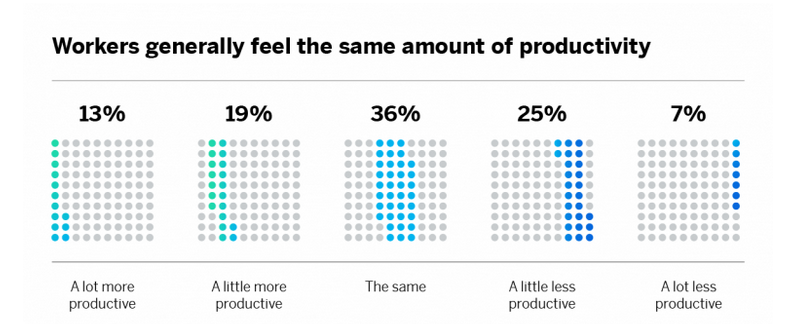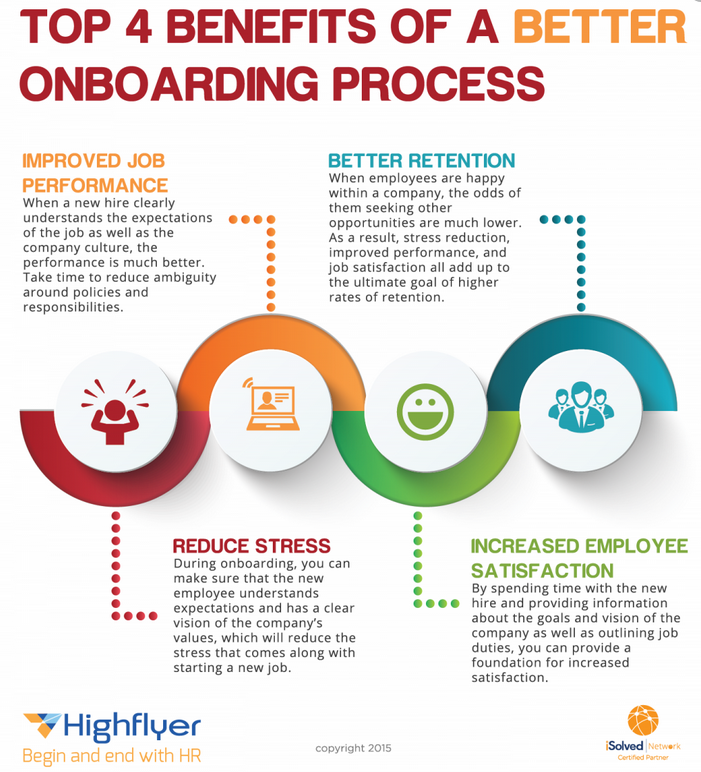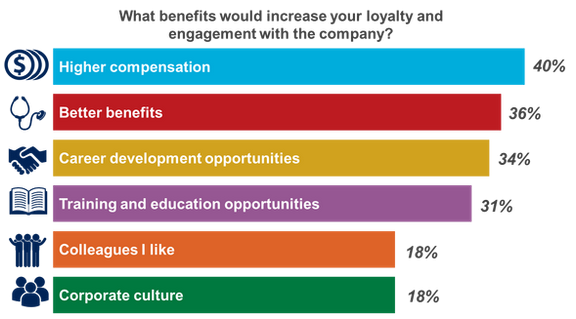The Coronavirus (COVID-19) pandemic has had a huge impact on the way we work. As governments worldwide urge people to stay at home to curb the spread of the virus, working from home has become the new normal across many industries. With the crisis ongoing and no end in sight, it remains unclear how long workers will have to wait before they can physically return to their workplaces.
What is clear at this stage is that leaders will have to seriously consider not just how businesses can recover, but the possibility of a completely changed workplace landscape post-COVID. This means that, starting now, they should plan and prepare for this reality. This includes exploring alternative strategies to managing their workforce and hiring new employees.
Keep reading for some helpful recruiting tips to help you stay one step ahead in this strange new world.
1. Hire Candidates for Flexible Roles
Flexible working is likely here to stay. The necessity of home working during the pandemic has proven that this is viable for far more roles than previously thought. Employees will not forget this and will continue to seek greater flexibility in both working patterns and location.
Your recruitment marketing efforts should focus on flexibility. Even when people can report to work physically once more, having this foundation in place will help you to attract and retain the best talent.
If COVID-19 has taught us one thing, it is that we should always be on our toes. Disaster can strike at any time and when it does, those who are prepared fare the best. Embedding flexibility into your workplace culture ensures that, when the unexpected happens, you are prepared and can act fast to mitigate damage.
Having your doubts about flexible working in the long term? You’d be in good company! Barclays Bank and marketing and advertising giant, WPP, are amongst the companies who have said they expect flexible working to be the norm long after the pandemic is over.
Source: Qualtrics
What’s more, a Qualtrics study reported that American workers typically feel about as productive at home as they do in the office:
2. Use Online Tools for Interviewing and Assessing Candidates
The COVID-19 crisis has proven the immense power of the internet. The companies that were able to adjust quickly were generally those with robust IT infrastructure already in place, whether through remote working tools or an ecommerce counterpart for retailers.
Just as the internet has enabled many companies to continue operating remotely, you can also harness the power of the web to keep your recruitment efforts going – and to improve them in the post-COVID world.
You were most likely utilizing online job advertisements and application processes already. All you need to do is take this one step further. Interviews and candidate assessments can all be conducted digitally.
This could be as simple as conducting video interviews using Zoom or Skype. However, you can also get creative with your online proactive recruitment strategies. Harqen’s on-demand interviewing technology, for example, analyzes candidate compatibility from a single interview response, using machine learning algorithms.
Even when the pandemic is over, you should consider offering remote interview options. This saves your candidates time and money as they do not need to travel to your office, and gives you a much wider potential candidate pool. As with working patterns, a flexible attitude to hiring will help you attract and retain the very best people.
3. Build a Solid Talent Pipeline
A talent pipeline is a pool of people with whom you’re interested in working and have built a relationship. This means that if you need to fill a crucial position quickly, there are potential hires already on your radar.
Source: HR Technologist
Recruitment events are a great way to build your talent pipeline. While there are no face-to-face events at the moment due to social distancing measures, you can start out with online events. These allow you to meet others in your industry and start to build your network. Engage potential candidates early, even if you don’t have a specific job opening just yet.
Other useful ways to build your talent pipeline include:
- Search LinkedIn using relevant keywords and job titles.
- Check out industry hashtags on social media and connect with potential candidates through discussions on those platforms.
- Ask around within your niche – personal recommendations from respected people can carry a lot of weight.
- Consider former employees, promising interns, and those who reached the final stages of previous hiring processes.
If you’d like to connect with somebody but don’t have their contact information, you can use an email finder to look for their email address.
A solid talent pipeline can help to fast-track the recruitment process, meaning that you spend less time and money on hiring and that key roles are filled quickly.
4. Rely On Your Applicant Tracking System
Huge amounts of layoffs due to COVID-19 mean that there will be a surge in job applicants when the pandemic is over. Industries that have continued to flourish despite the crisis are seeing this influx already.
This means that for every position you advertise, you’ll likely receive more applicants than you would have expected previously. This is where your firm’s Applicant Tracking System comes in handy.
A good ATS saves you time by organizing resumés and automatically highlighting the top candidates. (A quick tip for candidates: look at resume examples to make sure your resumé is optimized for ATS algorithms!) Start getting to know your ATS now so that you’re well prepared to utilize it in the post-COVID hiring rush.
As well as streamlining your hiring process and saving you time, a good ATS has a number of key benefits:
Source: HR Gazette
Remember that talent pipeline we discussed above? Your ATS can also identify promising candidates who should be on your radar for future openings.
5. Go Digital In Employee Onboarding
Onboarding is a crucial part of the recruitment process and can really make or break a new hire’s experience with your company. The purpose of onboarding is to welcome your new employee, give them all the information they need, and acclimatize them to the company culture.
We’ve already discussed recruiting online and using digital tools to enable remote working. Companies also need to embrace digital solutions to onboarding new employees. Traditional face-to-face onboarding processes are not only time-consuming but also subject to inconsistency and human error. This holds particularly true for enterprises operating with globally dispersed teams. This is precisely where the implementation of a Global HRIS software becomes pivotal. Streamline the entire workflow, spanning from talent acquisition to onboarding, with the integration of this comprehensive tool.
Source: Highflyer HR
Digital onboarding means that all new hires get the exact information they need, without the risk of something important being missed. It also means that your new hire can review the materials at their own pace, revisit anything they do not understand, and keep them to hand for future reference.
Consider the following digital onboarding methods:
- Videos or podcasts with key information.
- A robust FAQ page with all the questions your new employee is likely to have.
- An employee portal where people can sign up for benefits, check their payslip, update their details and even book vacation days.
- Interactive training websites with quizzes and knowledge checks.
- Digital documents and signatures to minimize paperwork.
Not all will be appropriate for all companies, but chances are some of them will work for your company.
6. Make it Easy for Candidates to Apply Online
Online application processes are now the norm in a large majority of industries.
Your website must include a Careers page, with clear instructions on how to apply online. For some roles, this process might be simply to email a resumé and a cover letter. But more and more employers are using online candidate portals. The advantage of these is that candidates can save their details, saving them time if they wish to apply for another position with you in the future. They also allow candidates to track the status of their application without needing to email or call to follow up.
Your application portal should be simple and intuitive to use. It could also not be overly cumbersome, ask an excessive number of questions, or make candidates input the same information multiple times. The rule of thumb is to ask for the minimum amount of data you need to make an informed decision about shortlisting. The more detailed questions can be saved for the interview.
7. Expand Your Recruitment Marketing Efforts
Recruitment marketing refers to the strategies you use to let candidates know that you are hiring. Expanding and improving your recruitment marketing gives you the best chance of attracting excellent talent.
You will undoubtedly use digital jobs boards to advertise your vacancy. Remember to optimize the job title and description using keywords so that the right candidates find your listing. Social media, too is a haven of potential hires, with its 3.81 billion users as of April 2020:
Source: Statista
If you have not already, expand your recruitment marketing efforts to the four major platforms (Facebook, Instagram, Twitter and LinkedIn). You should also consider platforms such as Reddit and Meetup. The key is to thoroughly understand your ideal candidate and go where they are most likely to be.
Wherever you’re posting it, the quality of your ad is also crucial. The job title should be short and descriptive, and accompanied by a short paragraph about the role. You should also mention any compelling benefits your company offers, whether it’s an industry-leading salary, flexible working, or a generous vacation package.
Using images or video in your ad is proven to boost its effectiveness. On Twitter, for example, tweets with images receive an average of 35% more engagements than those without.
Finally, don’t forget to link directly from your ad to the full job description and your application portal!
8. Invest In Your Current Workforce As Well
It is well known that customer retention is more efficient than new customer acquisition. The same principle also applies to employees.
The COVID-19 pandemic has shown many companies just how important caring for their employees really is. Those offering comprehensive healthcare, work from home jobs and lots of flexibility to their staff in these difficult times will reap the rewards in the form of greater loyalty and a higher quality of work.
Meanwhile, those who have placed employees at increased risk, made unreasonable demands or laid people off at the first sign of problems will likely see demotivated, dissatisfied and less productive staff. Early research also indicates that how companies are treating their staff now will impact upon customer loyalty.
Therefore it has never been more important to invest in your current workforce. Be open and transparent with your staff. Do all you can to minimize job losses – and where you must cut jobs, offer a severance package and as much notice as possible.
There are many ways you can invest in your existing staff. Pay particular attention to the factors most likely to impact employee loyalty:
Source: 2020 Workforce
Career development opportunities are likely to be particularly appealing after the huge unemployment and job insecurity crisis created by COVID-19. A culture of recognising talent, nurturing it and promoting from within will serve you well. Internal hires tend to settle into a new job more quickly as they are already familiar with your company’s culture, processes and teams.
9. Keep Former Employees Close
Perhaps you have done your best to keep everyone on, but ultimately had to lay off some employees due to the financial impact of COVID-19. Or perhaps one of your best performers has had a great job offer elsewhere and moved on. Either way, you should not cut ties with former employees.
Keeping strong former employees close serves two main purposes:
First, people who have worked for you are the best advocates for your company. If your employee had a great experience working for you, they will tell people about that. (Of course, if they had a terrible experience they’ll also tell people about that!) Many industries are small and networks are incredibly important. Positive reviews from former employees will help attract great talent to your company.
Second, there might be an opportunity to rehire that person at some point. This is especially true if they have been laid off unavoidably due to financial constraints, but also applies if they have left voluntarily. One study showed that 29% of Americans have returned to a former employer after leaving.
Keeping a strong relationship with a great former employee means that if the right vacancy opens up, they are more likely to consider returning to you.
10. Align Team Members on Recruitment Strategy and Successful Candidate Criteria
When you’re making adjustments to your recruitment strategy, you should make sure everyone who will be affected is informed and has bought into the new strategy.
Source: Giphy
If your focus is on virtual interviews, for example, make sure that everyone who will be on an interview panel has been briefed on how this process works.
It is also important to make sure that the interview and selection panel are aligned on what the successful candidate criteria will be. If team members are focused on different things, it will be impossible to make a hire that everyone feels great about.
Hiring strong talent will be more important than ever as businesses rebuild from the effects of the COVID-19 pandemic. Ensuring that all the key people are aligned on the company’s needs and strategy for meeting them will be vital.
Conclusion: Adaptability is Key
The COVID-19 pandemic has changed the way we work and is likely to have repercussions long after the current crisis is over. With remote and flexible working patterns likely here to stay, along with changing employee and customer priorities, a significant overhaul of recruitment strategies will be necessary for businesses who want to stay ahead of the curve. This is just as true for people looking to start a business, as it is for established businesses.
COVID-19 has proved that in the world of business, adaptability is everything. Companies which can adapt to changing circumstances and unforeseen crises are the ones that survive and thrive.
It is likely to be some time before the pandemic ends and things return to some semblance of normality. Whatever that new normal looks like, it will be radically different from the world we knew before.
Start planning your post-COVID recruitment strategy now. That way, you will be well prepared for whatever comes next.






Comments are closed.